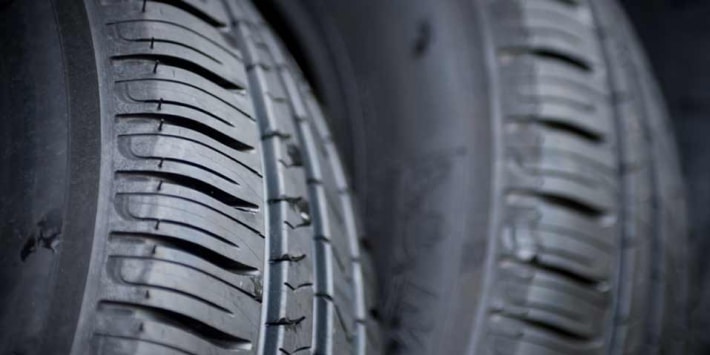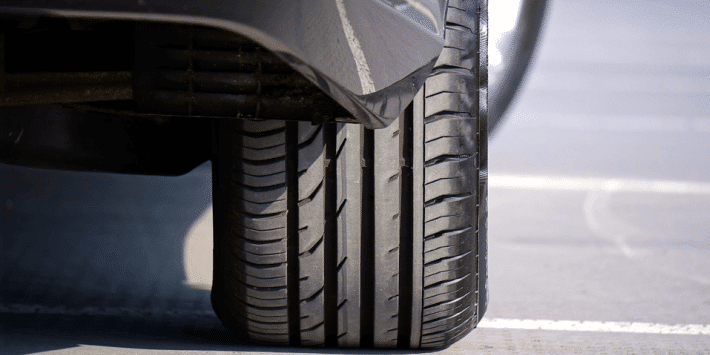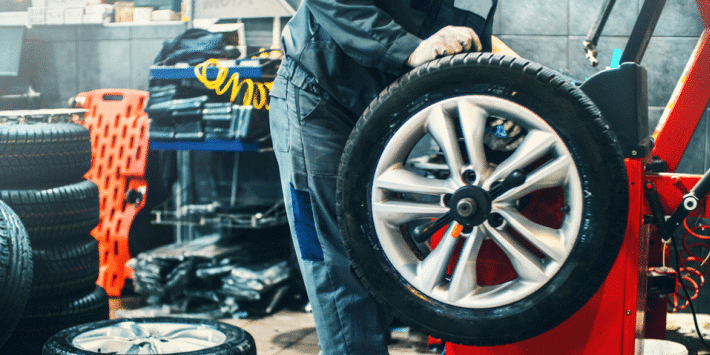Wondering if your tyres are still in good condition? Find out how to check the tread depth to make sure you’re within the legal limit. It's easy and quick to do, not to mention important, since a bald tyre puts you at risk of both an accident and a hefty fine.
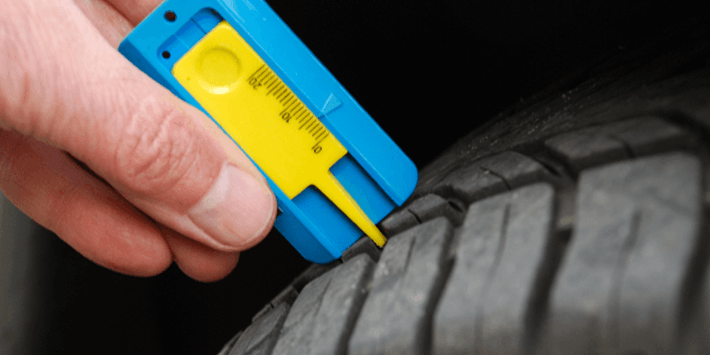
How to measure tread depth?
There are several easy ways to check the tyre tread. First of all, park your vehicle on a flat surface and turn your wheels 45 degrees to the right or to the left to gain easy access to your front wheels. We show you three ways to check the tread wear of each tyre:
Tyre Wear indicator
All tyres come with a tread wear indicator: this is a 1.6mm thick rubber bar embedded at the bottom of the tyre’s main grooves. When the tread wears down to the level of this indicator, this means that the tyre has reached the legal minimum tread depth and needs to be replaced. This check is quick and easy to do, and ensures that if your tyres are close to the legal limit, it’s you who notices it first, and not a police officer!
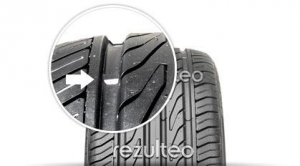
To help you locate the position of the tread wear indicator on your tyre, a small mark is stamped on the tyre’s sidewall. It may be the initials TWI (Tread Wear Indicator), the brand logo or a triangle.
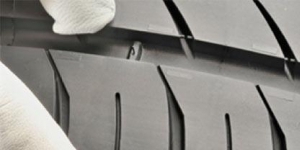
Certain brands, such as Continental, also insert intermediate tread wear indicators: when they disappear, this indicates that the tyre no longer offers optimum performance on wet roads. For winter tyres, tread wear indicators show when the tread depth reaches 4mm.
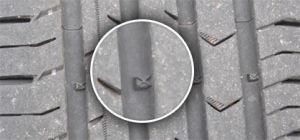
Finally, other brands such as Nokian use a numerical tread wear indicator for their winter tyres: numbers on the tyre indicate the tread depth, disappearing as the tyre wears down.
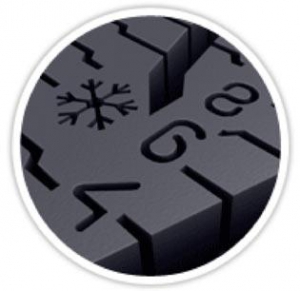
Tread depth gauge
To get a more precise idea of tyre wear, pick up this inexpensive tool from your nearest auto centre. A tread depth gauge is more precise than a tread wear indicator and allows you to accurately measure the exact tread depth of your tyres at any point on their surface, which is particularly important as tyres do not wear evenly.
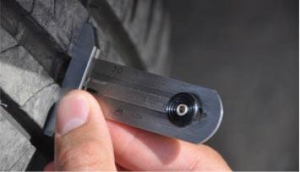
20p tyre test
If you have yet to buy a tread depth gauge, an approximate measurement can be taken by placing a 20p coin into the grooves on your tyre: if the outer rim of the inserted 20p coin edge is visible, then your tread depth might be below the legal limit and you should get your tyres checked by a professional. However, measuring tyre tread depth with 20p is less accurate than using a depth gauge.
Finally, if you should ever find yourself needing to check your winter tyre tread on the continent, you can use a 2 euro coin. If the sliver outer edge is visible above the groove, then the tyre is worn.
Why is tyre tread depth important?
Tyres are the only contact between your vehicle and the road. The tyre tread forms small grooves and ridges which run along the rubber surface of a tyre. They shape the tread pattern of the tyre. That is why the quality of the compound and tread depth are important with both directly impacting your tyres’ ability to grip the road.
What is the legal tyre tread depth?
How do I know when my tyres need changing? In the UK and Europe, the minimum legal tread depth is 1.6mm across the central ¾ of the tread, over the entire circumference of the tyre. Bear in mind that, in wet conditions, tyre performance starts to deteriorate well before reaching this level of wear. This is why some tyre wear indicators allow motorists to monitor the stages of tread wear and see the threshold at which wet performance is reduced.
If you’re caught with tyres below the minimum tread depth, you risk a fine of £2,500 plus 3 penalty points (and that’s per tyre). Furthermore, insufficient tread depth will cause your car to fail its MOT.
Is 3mm tyre tread ok?
In some countries, there is a higher minimum tread depth for winter tyres. For example, take care if you are travelling in Austria between 1st November and 15th April: winter tyres are mandatory and the minimum legal tread depth is 4mm.
Bald tyres: what are the risks?
Driving with worn tyres, makes you more susceptible to aquaplaning and punctures. For example, as a summer tyre wears down, it doesn’t grip as effectively, especially in wet conditions. In other words, driving with worn tyres, means you risk losing control of your vehicle.
rezulteo conclusion
You should check the tyre tread depth regularly. The tread pattern is a guarantee for the safety and performance of your tyres. Use tools such as a tread depth gauge or 20p coin to correctly measure the depth of the tread. If safety and legal requirements are no longer guaranteed, then it is time to change your tyres.
Are your tyres worn?


